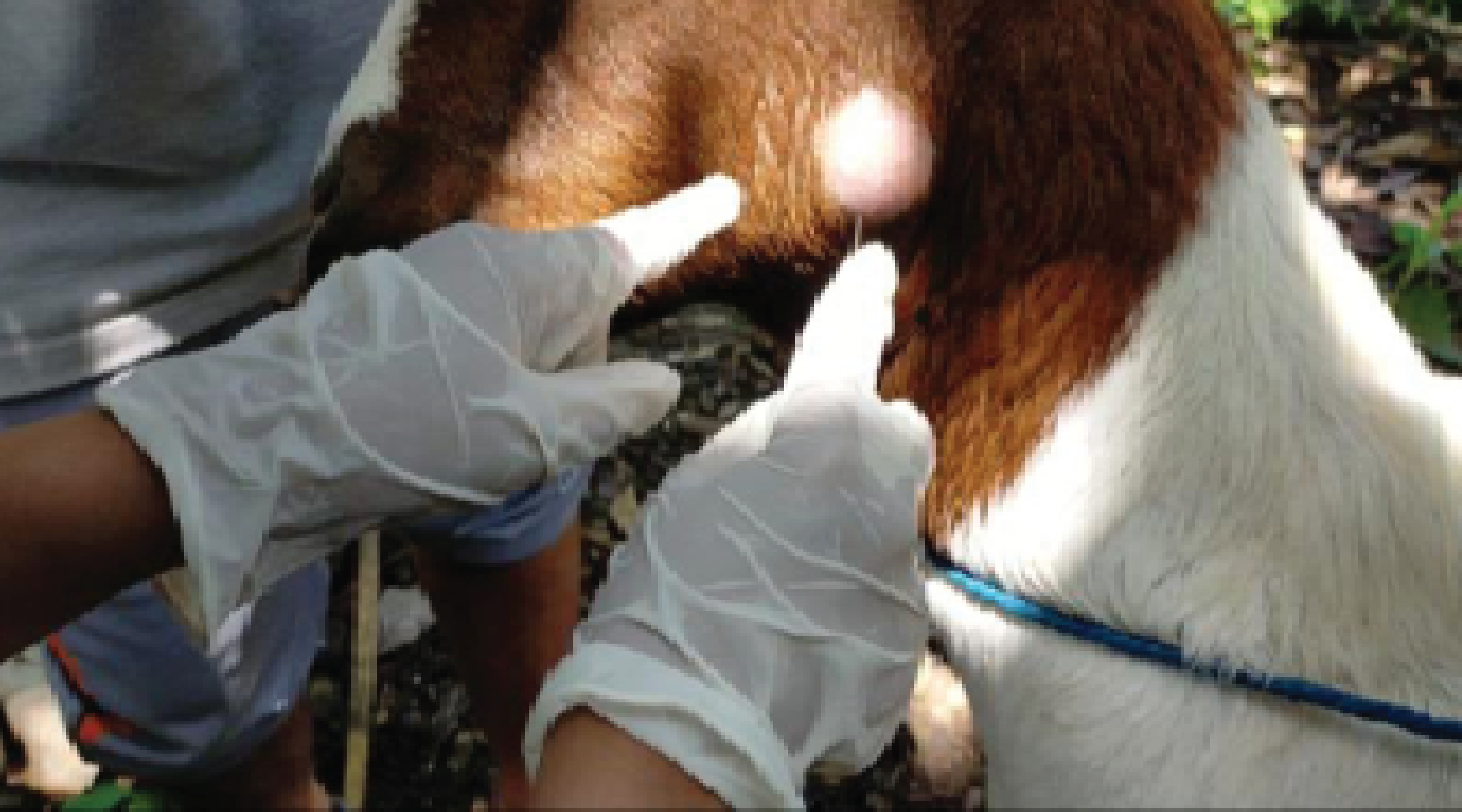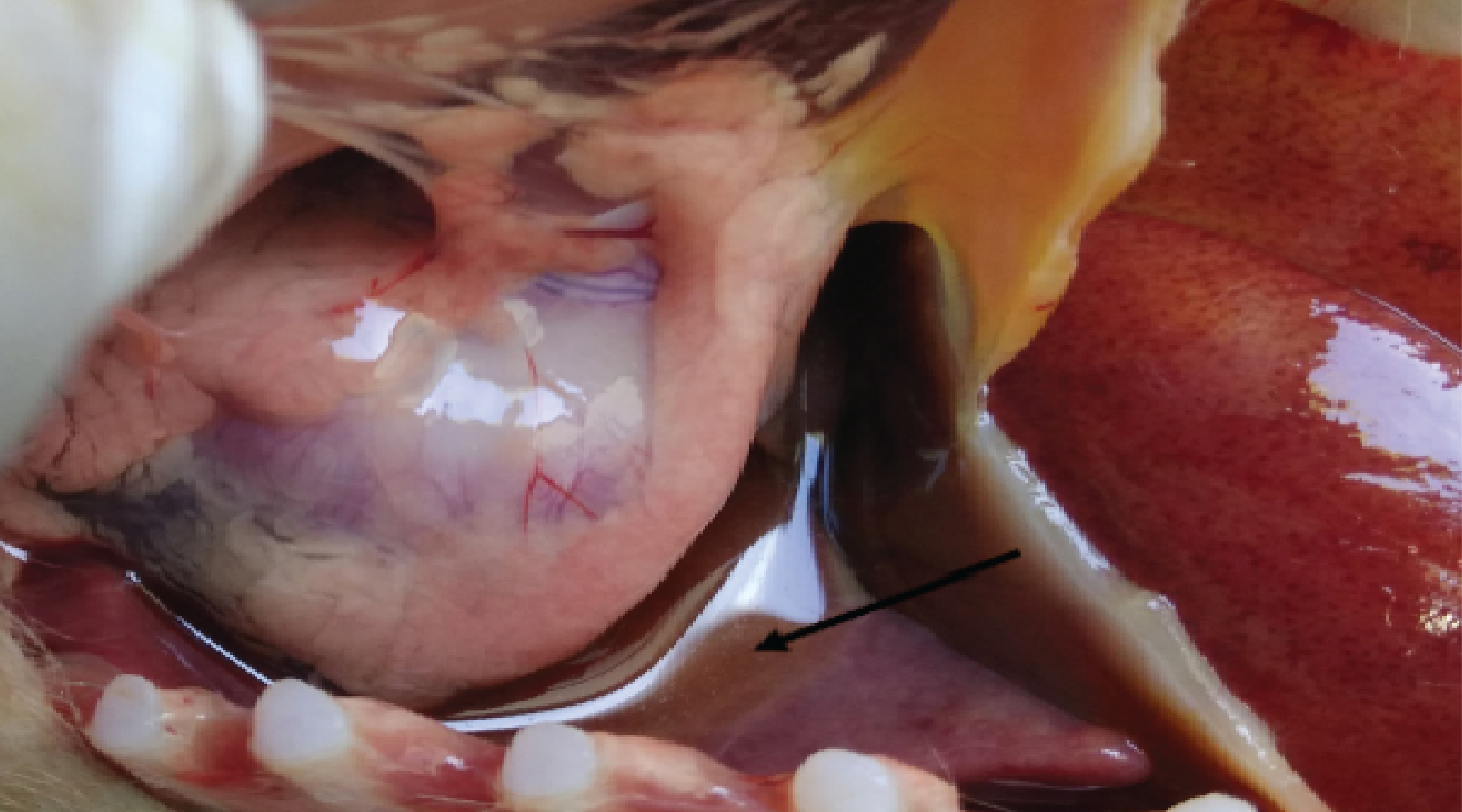The Potency of Giving Turmeric (Curcuma domestica Val.) Flour to The Quality of Quail (Coturnix coturnix japonica) Eggs
Downloads
Background: Supplementation of good feed on quail can improve its egg quality. One of the excellent supplement comes from herbs. Turmeric is one of the herbs which good for livestock because of its content, curcuminoid, and essential oil. Curcuminoid can increase quail egg yolk color, increase the appetite so that it can increase the weight of poultry. Purpose: To know the potential of giving turmeric flour to the quality of quail's egg. Methods: The methods used 40 quails, divide into two groups. Groups P0: quail fed without turmeric flour, and group P1: quails fed with 1,07% turmeric fluor. Variables observed were egg weight, haugh unit, egg yolk index, white egg index, and yolk color. Result: The Egg weight, haugh unit, yolk index, and yolk color of P1 was higher than quails fed without turmeric. However, there was no difference between the egg whites index of both groups. Conclusion: The addition of turmeric on feed has the potential to increase the egg weight, haugh unit, yolk index, and yolk color. However, turmeric was not directly affected the formation of egg whites.
Amo, M., Saerang, J. L. P., Najoan, M., Keintjem, J. 2013. Pengaruh Penambahan Tepung Kunyit (Curcuma domestica val) Dalam Ransum Terhadap Kualitas Telur Puyuh (Coturnix coturnix japonica). Jurnal Zootek 33 (1): Pp. 48-57.
Amrullah, I. K., 2003. Nutrisi Ayam Petelur. Bogor: Lembaga Satu Gunung Budi. Atmajaya, D. A., 2014. Pengaruh Ekstrak Kunyit (Curcuma domestica val) dan Temulawak (Curcuma xanthorriza roxb) dalam air minum terhadap persentase dan kualitas organoleptik karkas ayam broiler. [Skripsi]. Universitas Brawijaya.
Badan Standardisasi Nasional, 2008. Telur Ayam Konsumsi. SNI 01-3926- 2008. Jakarta: BSN. Balittro, 2008. Budidaya Tanaman Kunyit. [Online] Available at: http://www.balittro.go.id/ incles/kunyit.pdf. Diakses: 25 Maret 2019.
Fibrianti, S. M., Suada, I. K., Rusyanto, M.D. 2012. Kualitas Telur Ayam Konsumsi yang Dibersihkan dan Tanpa Dibersihkan Selama Peyimpanan Suhu Kamar. Indonesia Medicus Veterinus, 1 (3):Pp. 408-416.
Haryono, 2000. Langkah-Langkah Teknis Uji Kualitas Telur Konsumsi Ayam Ras. Temu Teknis Fungsional non Peneliti. Hal. 175-183. Kumar V., S.K. Sharnya. 2006. Antioxidant Studies on Some Plants. Hamda Medicus Xlix, (4): Pp. 25-36.
Kusumastuti, D. T., Praseno, K., Saraswati, T. R. 2012. Indeks Kuning Telur dan Nilai Haugh Unit Telur Puyuh (Coturnix coturnix japonica) Setelah Pemberian Tepung Kunyit (Cucuma longa). Jurnal Biologi 1 (1): Pp. 5-22.
Muchtadi, T. R., Ayustaningwarno, F., Sugiyono. 2010. Ilmu Pengetahuan Bahan Pangan. Bandung:Penerbit Alfabeta.
Parizadian, B., Ahangari, Y.J., Shargh, M.S., Sardarzadeh A. 2011. Effects of Different Levels of L-carnitine Supplementation on Egg Quality and Blood Parameters of Laying Japanese Quail. Int.J.Poultry Sci. 10 (8): Pp. 621-625.
Pertanian, D. J. P. d. K. H. K., 2017. Statistik Peternakan dan Kesehatan Hewan (Livestock and Animal Health Statistic). s.l.: Direktorat Jenderal Peternakan dan Kesehatan Hewan Kementrian Pertanian RI.
Priyadarsini, K.I., Maity, D.K., Naik, G.H., Kumar, M.S., Unnikrishnan, M.K., Satav, J.K., Mohan, H. 2003. Role of Phoenic O-H and Methylene hydrogen on The Free Radical Reactions and Antioxidant Activity of Curcumin. Free RadicalBiol. Med, 35 (5): Pp. 475-484
Samli, H. E., Agna, A., Senkoylu, N. 2005. Effects of Storage Time and Temperature on Egg Quality in Old Laying Hens. J. Appl. Poult. Res, 14 (3): Pp.548-553
Sudaryani, T., 2006. Kualitas Telur. Jakarta: Penebar Swadaya.
Swacita, N. I. B., Cipta., I.P.S. 2011. Pengaruh Sistem Peternakan dan Lama Penyimpanan Terhadap Kualitas Telur Itik. Buletin Veteriner Udayana, 3(2): Pp. 91-98.
Yamamoto, T., L. R., Juneja, Hatta, H., Kim, M. 2007. Hen Eggs : Basic and Appliad Science. Canada:University of Alberta.
Copyright (c) 2020 Astrid Annisya Adhy Putri, Agus Widodo, Ratna Damayanti, Tri Wahyu Suprayogi

This work is licensed under a Creative Commons Attribution-ShareAlike 4.0 International License.
- The journal allows the author to hold the copyright of the article without restrictions.
- The journal allows the author(s) to retain publishing rights without restrictions.
- The legal formal aspect of journal publication accessibility refers to Creative Commons Attribution Share-Alike (CC BY-SA).

Journal of Applied Veterinary Science and Technology is licensed under a Creative Commons Attribution-ShareAlike 4.0 International License





























